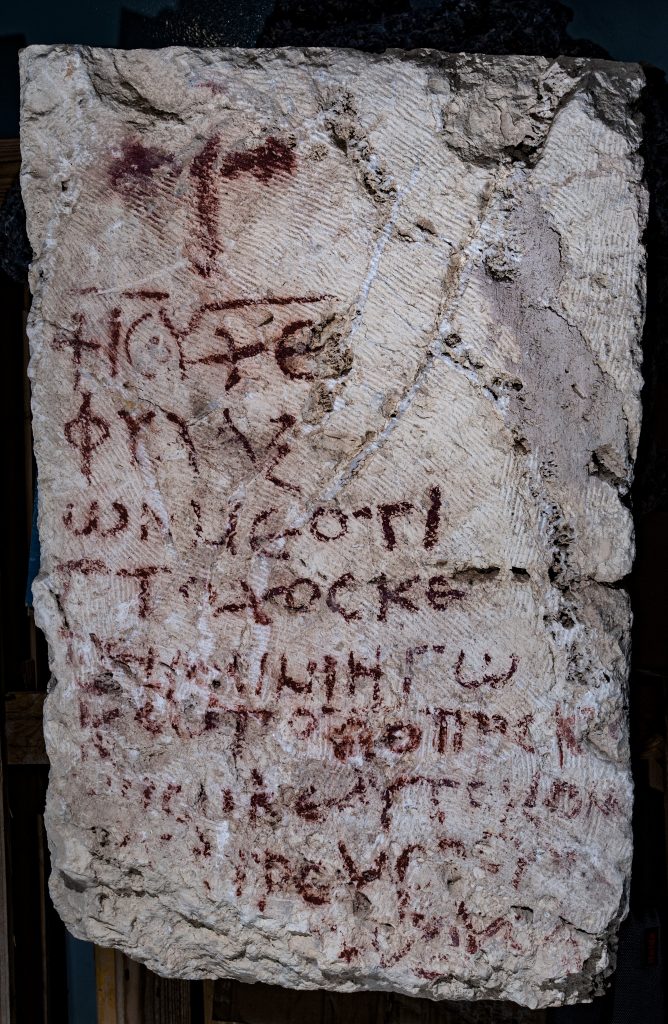
October 4, 2023 – Archaeologists from the Hebrew University of Jerusalem (HU) have unearthed a rare Byzantine Greek inscription paraphrasing a verse from the Book of Psalms at the remote Hyrcania Fortress in the Judean Desert in Israel.
This is the first methodological, academic archaeological excavation conducted at the site due to the complexity and remoteness of the location. Recently a team led by Hebrew University’s Institute of Archaeology researchers Dr. Oren Gutfeld and Michal Haber, along with Carson-Newman University (Jefferson City, Tennessee) and American Veterans Archaeological Recovery (AVAR), spent four weeks at the site.
Adorned with a cross, the Byzantine-era inscription was likely made by a knowledgeable monk and holds significance as a well-known prayer in the Masoretic text and Christian liturgy. Analysis of the script’s style suggests a dating no later than the first half of the 6th century CE, the height of the Byzantine era, with minor grammatical errors revealing the scribe’s mother tongue to be Semitic.
During this initial “pilot” season, efforts were primarily focused on two key areas. In the southeastern corner of the summit, a segment of the prominent upper fortification line was uncovered, a vital component of the Second Temple-period fortress dating back to approximately the late 2nd or 1st century BCE. This discovery prompted Dr. Gutfeld to observe, “There are certain architectural elements within these fortifications that strongly recall those of Herodium, all part of Herod’s extraordinary vision. It’s quite possible that the same engineers and planners even oversaw the construction. It’s not by chance that we call Hyrcania ‘Herodium’s little sister.’”
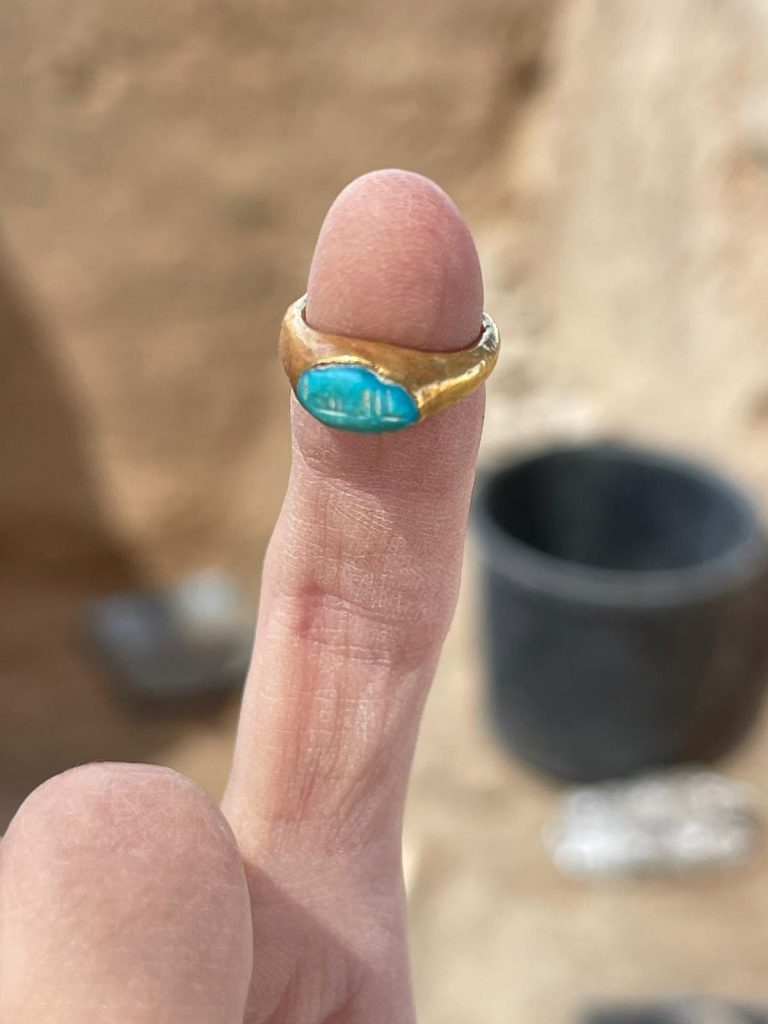
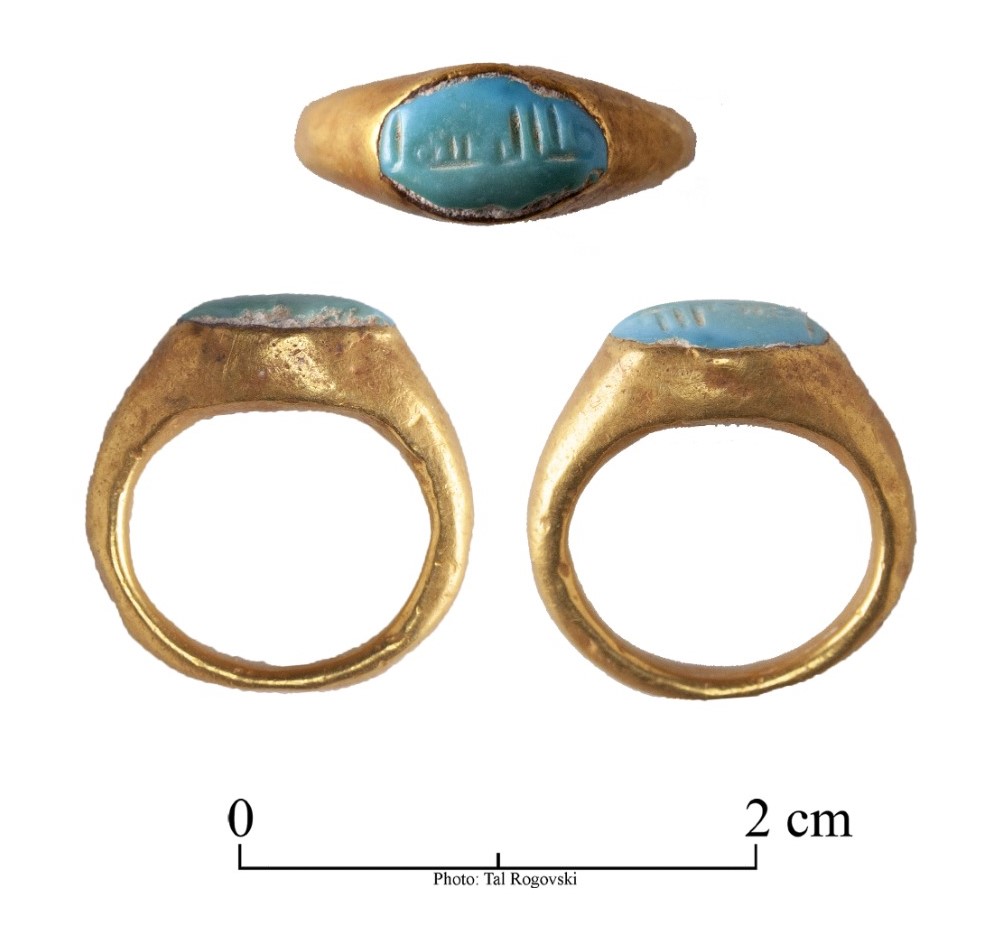
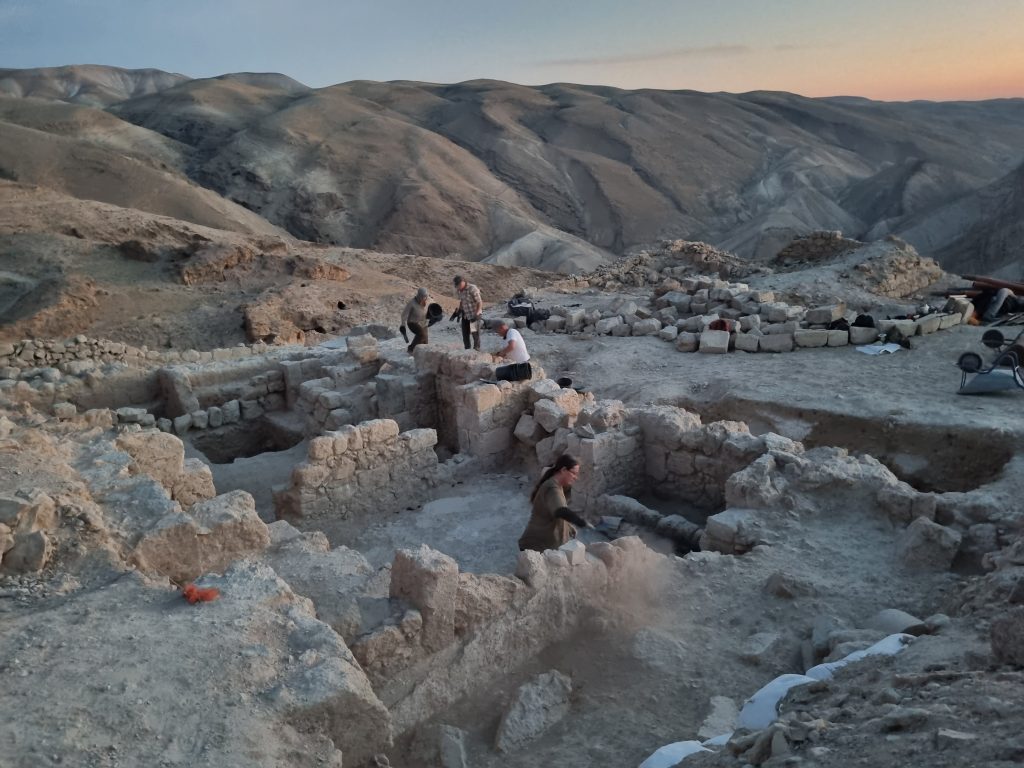
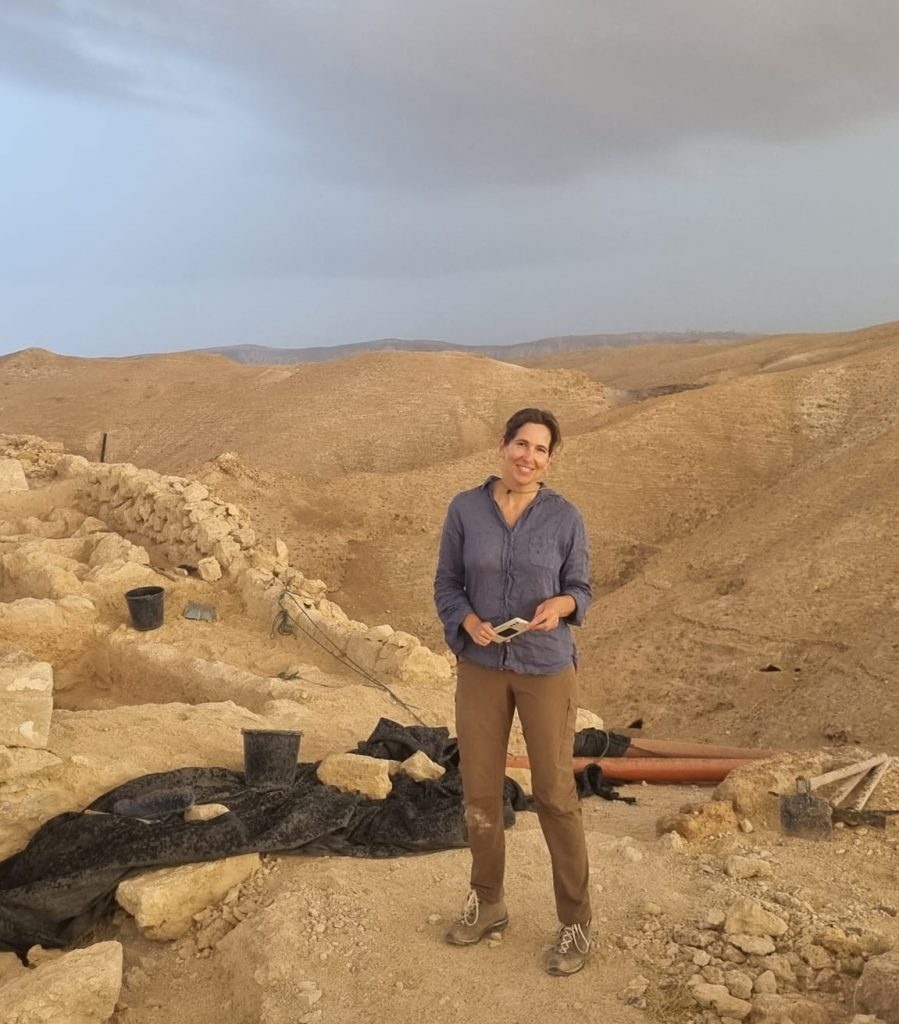
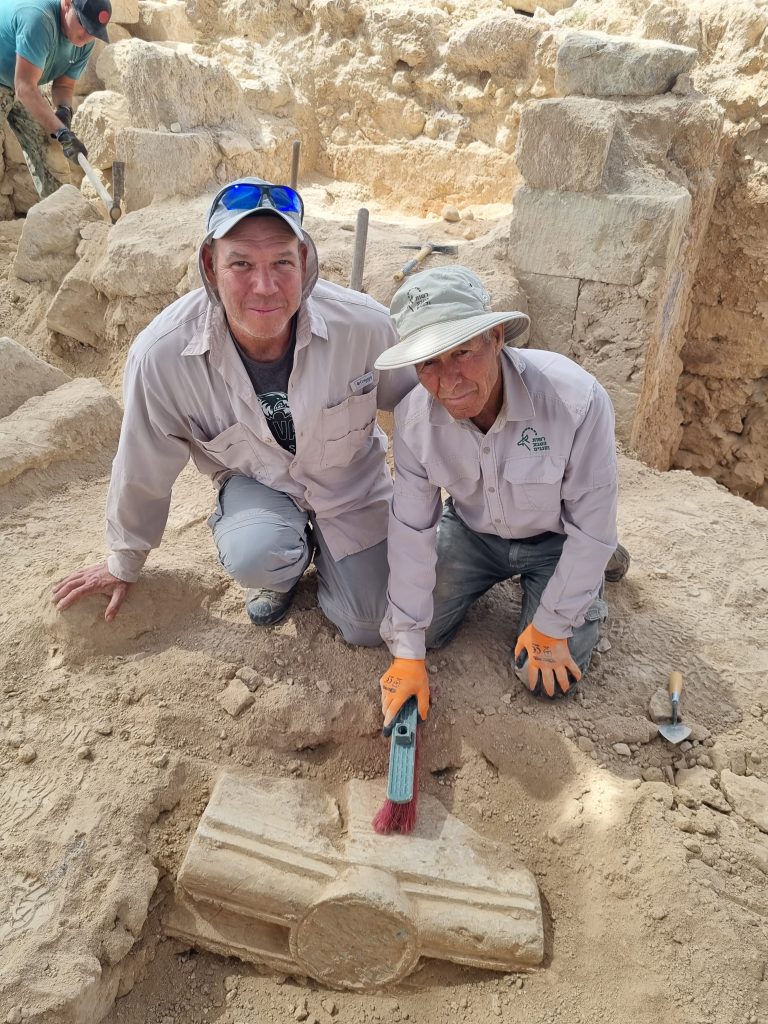
Over the course of excavation, a sizeable building stone was discovered lying on the plastered floor of the hall, bearing lines of text painted in red, with a simple cross at its peak. Haber and Gutfeld immediately recognized the inscription as written in Koine Greek — the language of the New Testament — but called on their colleague, expert epigraphist Dr. Avner Ecker of Bar-Ilan University, to decipher it.
Dr. Ecker was able to identify the readable text as a paraphrase of Psalms 86: 1–2, known as “a prayer of David.” While the original lines are “Hear me, Lord, and answer me, for I am poor and needy. Guard my life, for I am faithful to you,” the Hyrcania version reads:
† Jesus Christ, guard me, for I am poor and needy.
† Ἰ(η)σοῦ Χ(ριστ)ὲ
φύλαξ<ο>ν με ὅτι
[π]τ<ω>χὸς (καὶ)[π]έν[ης] <εἰ>μὶ <ἐ>γώHyrcania Background
Built upon an imposing, artificially leveled hilltop situated approximately 17 km southeast of Jerusalem and 8 km southwest of Qumran and the Dead Sea, Hyrcania was one of a series of desert-fortresses first established by the Hasmonean dynasty in the late 2nd or early 1st century BCE — named in honor of John Hyrcanus — and later rebuilt and enlarged by Herod the Great.
The most famous, and luxurious, of these strongholds are Masada and Herodium. Shortly after the death of the latter in 4 BCE, Hyrcania lost its importance and was abandoned. It would then lie desolate for nearly half a millennium, until the establishment of a small Christian monastery among its ruins in 492 CE by the monk Holy Sabbas, an expression of the monastic movement that took shape in the Judean Desert with the rise of the Byzantine period. Dubbed Kastellion, or “Little Castle” in Greek, the monastery remained active past the Islamic conquest of Byzantine Palestine around 635 CE but was apparently abandoned by the early 9th century. The site is known also by its Arabic moniker, Khirbet el-Mird, or “Ruins of the Fortress.” Attempts were made in the 1930s to revive the monastery, but harassment by local Bedouins cut the venture short.
A few days following this initial discovery, an additional inscription was found in close proximity. It was also inscribed on a building stone from a collapsed wall and is currently undergoing analysis. Michal Haber emphasizes the profound significance of these findings, stating, “Few items hold such importance in the historical and archaeological record as do inscriptions — and it must be stressed that these are virtually the first examples from the site to have originated in an orderly, documented context. We are familiar with the papyrus fragments that came to light in the early 1950s, but they are all of shaky, unreliable provenance. These recent discoveries are truly exceptional.”
Other Discoveries
The researchers also found a child-sized gold ring, a little over 1 cm in diameter and adorned with a turquoise stone. What adds to the special nature of the discovery is the miniature inscription incised in Arabic Kufic script on the stone. Dr. Nitzan Amitai-Preiss, an expert in Early Arabic epigraphy at the Hebrew University, was able to decipher the inscription as “مَا شَاءَ ٱللَّٰهُ” (Mashallah), which translates to “God has willed it.” She dates the script style to the time of the Umayyad caliphate, which reigned during the 7th and 8th centuries CE. Dr. Amitai-Preiss also observed a unique feature in the inscription: two of the three words were mirror images, strongly suggesting that the ring may have originally served as a seal.
The origin of the turquoise stone itself adds another layer of historical intrigue. It was likely sourced in the newly conquered territory of the Sassanid Empire (modern-day Iran), part of the expanding Umayyad caliphate. The exact path this remarkable artifact took to reach Hyrcania remains a mystery, as is the identity of whoever wore it.
Dr. Stephen Humphreys, the founder and CEO of AVAR, commented, “Our organization serves to provide military veterans with challenging fieldwork opportunities, giving them the support tools and training they need to excel. At Hyrcania, we saw the entire project team bond over the physical challenges and excitement of excavating this exceptional site. The training our veterans received at the site from the Hebrew University team will also make them more employable and better prepared to continue engaging with the field.”
Related articles
Electric Field Signals Can Serve as Early Warning for Extreme Weather, According to Hebrew University Study
November 19, 2024 — Atmospheric electric field measurements, which can serve as early indicators for extreme weather, offer vital real time forecasting capabilities, according to Hebrew University of Jerusalem researchers. In a new study published in Atmospheric Research, the researchers report
12,000-Year-Old Spindle Whorls, Used to Make Yarn, Identified in the Jordan Valley by Hebrew University Researchers
November 14, 2024 — Researchers from the Hebrew University of Jerusalem Computational Archaeology Laboratory have identified 12,000-year-old spindle whorls ─ early stone tools used to spin fibers into yarn ─ at the Nahal-Ein Gev II dig site in northern Israel. This finding, reported in PLOS
New Blood Test Offering Early Detection of Cancer Drug-Induced Tissue Damage Developed by Hebrew University Researchers
November 13, 2024 — A simple blood test developed by Hebrew University of Jerusalem researchers could provide a non-invasive method for monitoring potentially fatal lung damage in patients taking cancer drugs without the need for frequent scans. According to the study published in ESMO Open,


